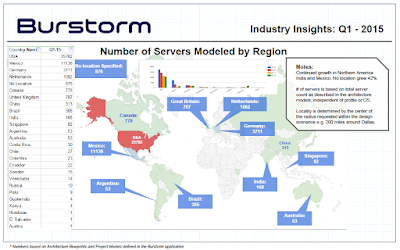Twitter Feed
Cloud Acquisition Strategy, Customized to the Right Cloud Model
by Melvin Greer Managing Director, Greer Institute This year has brought big news, significant changes and increased awareness of the adoption of cloud computing in Government. In fact Cloud computing…
Women leading us to the cloud
By Jodi Kohut Government Cloud Computing Professional By Jodi Kohut Government Cloud Computing Professional March is Women’s History Month. As we celebrate women and their role in our history, our…
CSCC Cloud Privacy Summit – Reston, VA March 26th
Please join the Cloud Standards Customer Council in Reston, Virginia on Thursday, March 26th for the Cloud Privacy Summit. This all day symposium will stimulate lively, interactive discussion and deliver…
Bangladesh: A country transforms with IT
Born out of a nine-month war of liberation in 1971, Bangladesh is a parliamentary democracy and a predominately Muslim country. After years of being a center for textile manufacturing, the country of…
Introducing CloudTek University
Visit us at https://www.CloudTekU.com Cloud Computing Basics https://sqz.co/Fs34AaX Cloud Technologies https://sqz.co/s2ACt68 Cloud Security https://sqz.co/Mp7m3TE Business Innovation https://sqz.co/j4NZb37 Cloud Computing Pilots https://sqz.co/e5HFy24 Cloud Operations https://sqz.co/p5CJo24 CloudTek Overview https://sqz.co/k9S4Ewt ( This content…
The Emerging Science of Digital Forensics
By Melvin Greer Managing Director, Greer Institute for Leadership and Innovation Without question, the rise in cyberleaks, nation-state cyber terrorism and the beach of consumer data across multiple industry domains…
African-Americans and STEM careers: Getting a foot in the door
By Sandra K. Johnson Technology leadership is driven by the innovation and creativity of science, technology, engineering and mathematics (STEM) professionals. STEM careers offer some of the highest-paying jobs and the…
U.S. Department of Defense sets its cloud security guidelines
By Jodi Kohut Those watching federal cloud security in the defense space were pleased to learn the Defense DOD Cloud Computing Security Requirements Guide (v1) (SRG) last month. This 152-page document outlines…
Circles are good for the economy
Contrary to what your mother may have told you, going in circles is sometimes a good thing. When it comes to our economy, it is actually a great thing. Throughout…
2015 National Chief Information Security Officer Survey
Cybersecurity breaches are seemingly making headline news every day. Recent cases have highlighted identity theft, the loss of personal financial data, and the disclosure of sensitive national security information. The…
as the linking of physical components and boxes together in way that addresses the organization’s needs. With this mindset, they focus on specific technical characteristics and capabilities. While these aspects still remain crucial to a successful deployment, the cloud solution architect must instead, visualize solutions as the linking together of compatible and interoperable services. With this viewpoint, the actual physical components are less of a concern and the service levels and service “-ilities” (maintainability, usability, portability, sustainability, etc.) rise in importance. They also must quantify the business economics of any delivered design. Many times economic aspects alone will define the difference between a new service launch and a new idea left on the shelf.
 |
|
Figure 1– Burnstorm cloud solution modeling software use
|
 |
|
Figure 2– Interactive solution design comparisons
|
( This content is being syndicated through multiple channels. The opinions expressed are solely those of the author and do not represent the views of GovCloud Network, GovCloud Network Partners or any other corporation or organization.)
( Thank you. If you enjoyed this article, get free updates by email or RSS – © Copyright Kevin L. Jackson 2015)
Cloud Computing
- CPUcoin Expands CPU/GPU Power Sharing with Cudo Ventures Enterprise Network Partnership
- CPUcoin Expands CPU/GPU Power Sharing with Cudo Ventures Enterprise Network Partnership
- Route1 Announces Q2 2019 Financial Results
- CPUcoin Expands CPU/GPU Power Sharing with Cudo Ventures Enterprise Network Partnership
- ChannelAdvisor to Present at the D.A. Davidson 18th Annual Technology Conference
Cybersecurity
- Route1 Announces Q2 2019 Financial Results
- FIRST US BANCSHARES, INC. DECLARES CASH DIVIDEND
- Business Continuity Management Planning Solution Market is Expected to Grow ~ US$ 1.6 Bn by the end of 2029 - PMR
- Atos delivers Quantum-Learning-as-a-Service to Xofia to enable artificial intelligence solutions
- New Ares IoT Botnet discovered on Android OS based Set-Top Boxes


